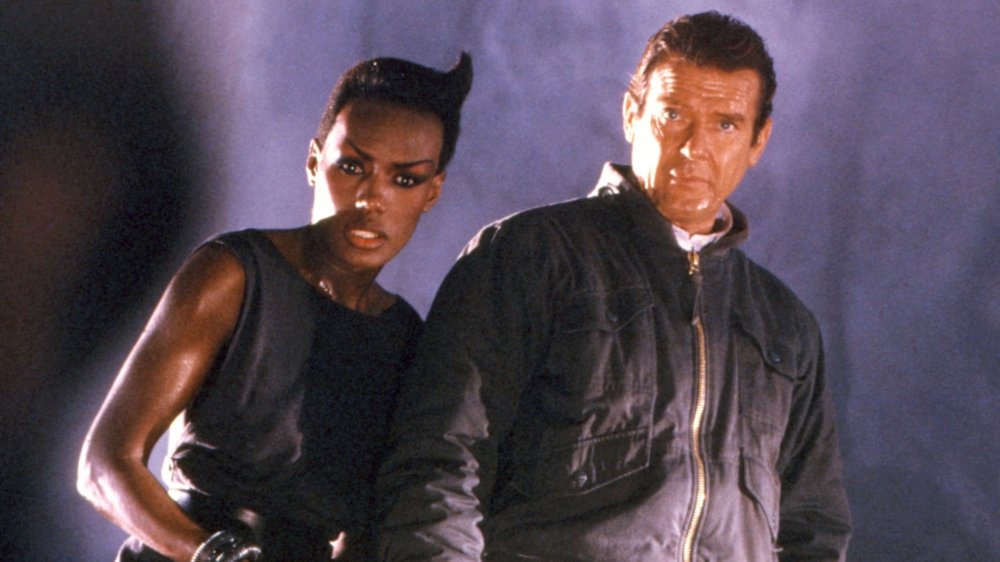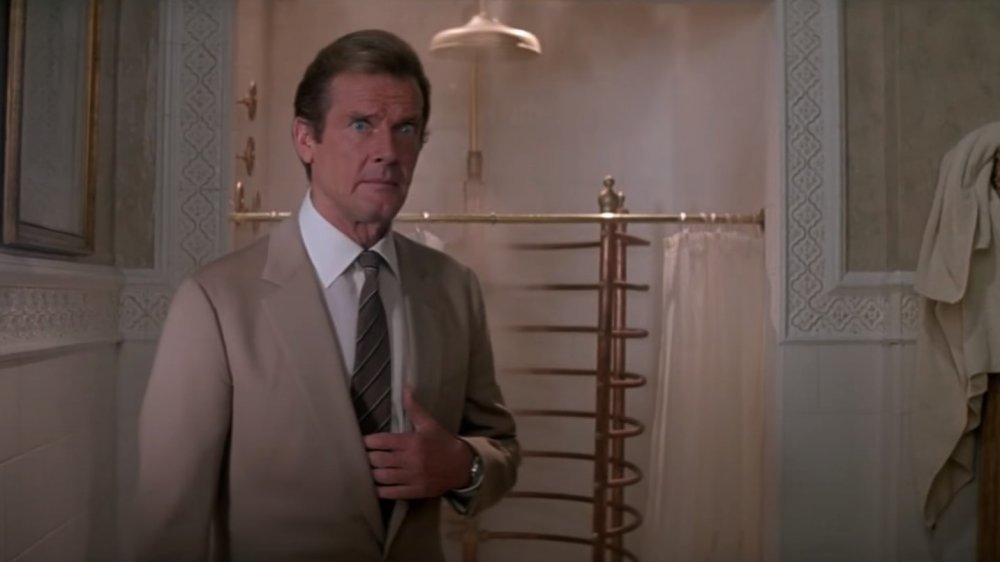Why A View To A Kill Was Roger Moore's Final James Bond Film
1985 marked the end of an era. Roger Moore was seven films deep into his run as James Bond, the secret agent repeatedly voted "undercover operative most likely to just tell everybody his name right off the bat." A View to a Kill, that year's release, had all the earmarks of a classic 007 adventure: international monuments, blimps, and a female villain with a contrived name.
Do you know what else it had? A very old leading man, comparatively speaking. At 57, Roger Moore was the oldest Bond in the Eon film series, and critics noticed. The Washington Post printed a review stating "Moore isn't just long in the tooth — he's got tusks, and what looks like an eye job has given him the pie-eyed blankness of a zombie. He's not believable anymore in the action sequences, even less so in the romantic scenes." In fairness, it was a problematic piece of journalism, which also described the film's female stars as "a notch below stunning." Still, critics weren't the only ones who'd realized that Moore was a touch more creaky than your average action star. Moore himself felt awkward about the fact that he was older than his leading lady's mother, according to Ultimate Classic Rock, and in the years since, he has consistently ranked A View to Kill as the worst Bond film.
Moore isn't alone in that assessment. In general, the only 007 movie that people dislike more is the 1967 parody film Casino Royale, featuring Woody Allen and Peter Sellers.
Double-Old Seven
By the time of A View to Kill, Moore considered himself "400 years too old for the part," according to the Baltimore Sun. However, critical consensus regarding Moore's entire turn as Bond had been sour for years. These days, Rotten Tomatoes calls Octopussy a "formulaic, anachronistic Bond outing." Moonraker opened with a henchman being thrown from a plane and landing in a circus net. The Man With the Golden Gun spends a not so inconsiderable amount of time focused on how many nipples the lead characters have at any given time. It was clearly time for a tonal shift.
Thus, 1987's The Living Daylights brought a new James Bond into the fold. Sam Neil was considered for the next Bond, as was Pierce Brosnan (right place, wrong time), but instead, producers landed on a Shakespearean actor, Timothy Dalton. 40 years old when hired, Dalton looked like a bright eyed young buck compared to Moore, and brought a stern, largely humorless energy to the part. By 1989's License to Kill, folks were getting full-on attacked by sharks onscreen, Benicio Del Toro was chewing severe scenery, and true to eighties form, cocaine was positively everywhere. Sadly, thanks to a lengthy lawsuit, Dalton's contract expired before a third outing could be arranged, according to the Week, leading to Pierce Brosnan years.
Moore, meanwhile, counted his residual checks, and cried all the way to the bank, when critics panned his next big budget entry into the British cultural dictionary, 1997's Spice World.

